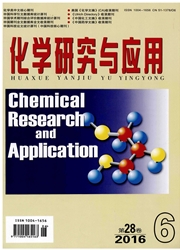

 中文摘要:
中文摘要:
成纤维细胞激活蛋白(FAP)与肿瘤微血管的形成和肿瘤的生长密切相关,是药物设计的理想靶点。本文运用分子对接分析51 个(4-喹啉)-甘氨酰-氰基吡咯烷衍生物与FAP 受体的相互作用,研究结果表明吡咯烷衍生物与FAP 受体ASP46、THR51、GLN721 等氨基酸残基形成氢键和立体作用。采用比较分子力场分析(CoMFA)和比较分子相似性指数分析(CoMSIA)组合场进行3D-QSAR 研究。CoMFA 和CoMSIA 模型的q2 及r2 分别为0. 821,0. 967 和0. 710,0. 951,3D-QSAR 结果表明模型具有较强的预测能力。3D-QSAR 等势图显示小分子的立体、静电、疏水、氢键等性质影响生物活性,与分子对接结果一致,为设计出更高活性吡咯烷类抑制剂提供借鉴。
 英文摘要:
英文摘要:
FAP involved in the formation of tumor microvascular and tumor growth was an ideal target for drug design. In this paper,the interaction of 51(4-Quinolinoyl)glycyl-2-cyanopyrrolidine scaffold derivatives and the FAP receptor based on the Surflex-dockwas studied. The result showed that pyrrolidine derivatives combine with FAP receptor amino acid residues ASP46,THR51,GLN721with hydrrgen bond and steric interactien. Then the combined field of CoMFA and CoMSIA was used to analyze 3D-QSAR models.The model(CoMFA with q2 = 0. 821,r2 = 0. 967,n = 5;CoMSIA with q2 = 0. 710,r2 = 0. 951,n = 4)had a good predictability. 3DQSARcontour maps indicated the steric,electrostatic,hydrophobic and hydrogen bond fields had a crucial effects to derivatives biologicalactivity,which in common with Surflex-Dock result. These datum provided significant theoretical foundation for designingpyrrolidine scaffold derivatives inhibitors.
 同期刊论文项目
同期刊论文项目
 同项目期刊论文
同项目期刊论文
 Quantitative prediction of class I MHC/epitope binding affinity using QSAR modeling derived from ami
Quantitative prediction of class I MHC/epitope binding affinity using QSAR modeling derived from ami Molecular Modeling Studies of Vascular Endothelial Growth Factor Receptor Tyrosine Kinase Inhibitors
Molecular Modeling Studies of Vascular Endothelial Growth Factor Receptor Tyrosine Kinase Inhibitors Proteasomal cleavage site prediction of protein antigen using BP neural network based on a new set o
Proteasomal cleavage site prediction of protein antigen using BP neural network based on a new set o 3D-QSAR studies of dihydropyrazole and dihydropyrrole derivatives as inhibitors of human mitotic kin
3D-QSAR studies of dihydropyrazole and dihydropyrrole derivatives as inhibitors of human mitotic kin 期刊信息
期刊信息
